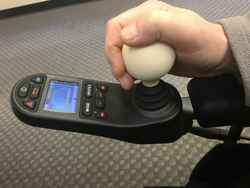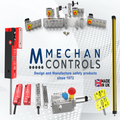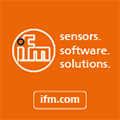
Posted to News on 10th Oct 2019, 16:02
3D printed parts improve usability of powered wheelchairs
Wheelchairs are a wonderful brainchild, though no one is quite sure when it was first invented. The first one on record was made for Phillip II of Spain in towards the end of the 1500s. Since then, incremental developments have been made but the basic design (except for specialised sports wheelchairs) remains the same. Other than motorised wheelchairs, which were introduced commercially after World War II to assist injured veterans to provide independence.

There remains a fundamental flaw in each of the self-powered and electric-powered wheelchair designs. For self-powered wheelchairs, if the person is not able to turn the large wheel manually, then another person would have to push it. The e-powered version would give them back their independence; however, for a paraplegic or someone suffering from Motor Neurone Disease, other than using mind control a technology which is still in its infancy, the fiddly joystick could prove inaccessible.
This is where Stephen Marshall steps in. He is a Senior Rehabilitation Engineer working in the NHS and he assesses patients with non-standard or bespoke requirements. For a wheelchair, this involves assessment, prescription and modification of wheelchairs, both self-powered and motorised. He mainly sees people with restricted movement, from a paraplegic, who is considered as an active user, to a person suffering from Motor Neurone Disease.
He explains: "People have an option to pay for extras to upgrade the equipment we supply. On one of these chairs, I noticed the cables protected by igus energy chain. I thought they would be just the ticket for managing all the cables on my movable TV mount at home." He's kept in contact with igus since.
For people who struggle to hold a Joystick, Marshall will commonly use a golf ball drilled out to fit the joystick shaft. When this has been too small, a tennis ball is used. Marshall explains: "This is generally too big for grabbing, and in the past we have drilled a hole in a billiard ball. With the advent of new joysticks, the push forces have been reduced and the joystick's ability to centre itself with such a weight has been challenged to such a point the chair continues driving once released. This, for many reasons, is not ideal."
Marshall, who also has a keen interest in 3D printing, asked his local fabrication laboratory to print a joystick modification a few years ago. He says: "It worked but proved a little too fragile for everyday use. When he was offered a free sample from igus, he thought he would have another go and it worked. Marshall adds: "Since the sample, I have just ordered another custom joystick through our contractor and may have a mounting solution later on to get printed."
In terms of benefits to using 3D printed joystick modifications, is the huge weight reduction - especially when a billiard ball-size piece is required. An additional benefit has been the ability to create a tactile finish on the parts, which provides a softer feel. Marshall concludes: "We hope to develop this area in the future, using different profiles and sizes to improve people's lives."
Follow the link for more information about the igus 3D printing service.
Want the latest machine building news straight to your inbox? Become a MachineBuilding member for free today >>

















